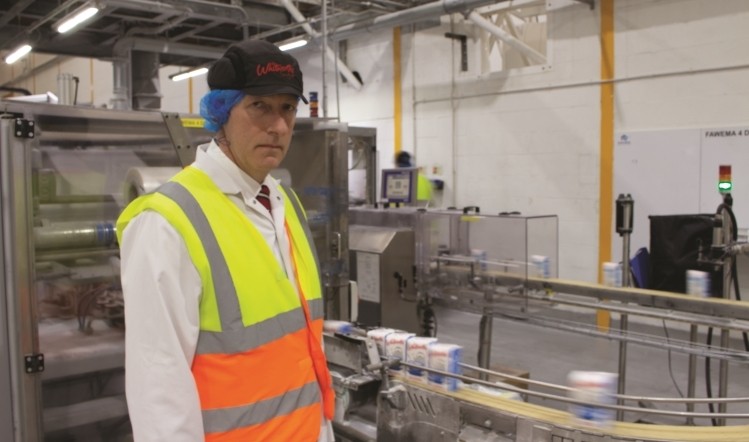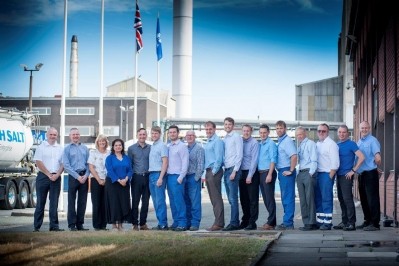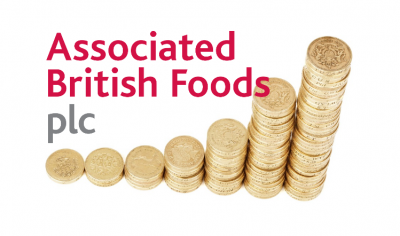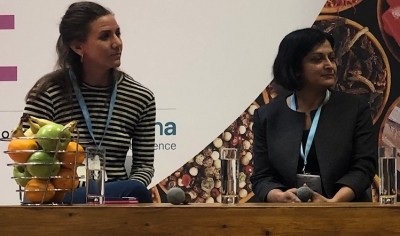Me and my team
Hitting the sweet spot at Tereos

Tereos’ Normanton factory began operating in 1994 as Normanton Foods, with one packing line. Today we have ten.
The company acquired the Normanton site and ware-housing in Stallingborough when it bought Napier Brown in 2015, so it started UK processing then, having set up its first UK sales office in 2005. The company also has a 50/50 joint venture with Sedalcol in Selby, part of Italy’s Frandino Group, producing value-added products from wheat, including wheat feed, gluten, starch and alcohol.
Since April 2016, Tereos has invested £500,000 here. In early 2016, we commissioned a Fawema packing line for icing sugars. The project included vacuum transfer of sugars and the automatic stacking of finished packs by an Abar Automation robot installation.
This facility is British Retail Consortium (BRC) A*accredited. We had our first unannounced audit last October. It takes two days. We use SAI Global. It’s a sea-change to go from announced to unannounced. Everyone has to be audit-ready all the time. We’re going through the conversion to BRC Version 8. We now carry out regular compliance checks three times a shift, driven by BRC and customer requirements.
Our core product is granulated white sugar in 1kg bags, but we produce some 500g up to 25kg packs. All the sugar comes from Tereos’ factories in France.
Capability and capacity
Three granulated lines have capability to be fed from silos. Our biggest holds 250t. We can load pallet sizes ranging from standard Euro-pallets to quarter Euro-pallets, the smallest of which allow small stores to merchandise non-shrink-wrapped sugar.
We operate six of our lines on core shifts and run three daily shifts, five days a week, 24 hours a day. Our high-speed line can handle 115 bags a minute, with capacity for 55t a shift. Our oldest line, installed in 1994, can manage 50 bags a minute.
We use Mettler Toledo detection equipment. Our most recent installation was one of their Safeline systems.
Factory screens display an overview of overall equipment effectiveness and health and safety data, so the staff can see how things are doing during the day. We don’t have bespoke online monitoring, so maintenance manager Carl Shaw and the engineering team want to create something by the end of this calendar year.
Accurate monitoring
Our most accurate monitoring is for stoppages, because when you record these manually, you often note an interpretation of what’s causing them. We carry out an average of 250 planned preventative maintenance inspections a month. But by linking into programmable logic controllers, you can see a lot more detail.
In 2017–18, we had zero health and safety incidents. Everyone gets the opportunity to raise health and safety ‘near-miss’ and hazard reports. Last year we set a challenge to get one from everyone and offered an extra day’s holiday, vouchers, a certificate and a trophy as an award for the best hazard report. That was our health & safety and facilities manager Grant Anderson’s idea.
We can store 7,000 pallets here, split between finished product and raw materials. We installed our current warehouse management system 18 months ago and use labels on all products and pallets, which improves traceability based on barcode information.
We have invested in low-energy lights, saving more than £30,000 a year on our warehouse electricity bills. Overall, we have reduced our warehouse electricity bills by 75%, from £8,000 to £2,000 a month and have seen similar benefits in our factory. The lights are on movement sensors and day sensors, so when no one’s around or there’s enough natural light, they switch off.
Brexit preparations
Should we need to build stock in the UK in preparation for Brexit, as we are doing, our eight-acre site at Stallingborough, three miles from Immingham Docks and 60 miles from Normanton, is really useful.
It is BRC AA accredited, has storage capacity for 8,000 pallets and 250 sea containers and has an overloader facility with metal-detecting capability for quickly transferring imported sugar to road tankers. There is no other facility like that in the UK. In addition, we can store liquid sweetener there in temperature-controlled ISO (International Organisation for Standardisation) tanks.
In 2017–18, the UK consumed 1.75mt of sugar. It produces roughly 1mt, with half of the deficit coming from the EU. Under a no-deal Brexit, the potential sugar import tariff under World Trade Organization rules would be more than 100%, or €411/t. The UK consumes 1.5mt of starch and sweeteners, with almost 800,000t coming from the EU.
The duties work out at €150–€500/t, resulting in a 25%–50% increase in factory gate price. We are committing to supply the same volumes of sugar up to the end of this year, but in the long term, given the shortfall between demand and domestic production, it is important for UK supply that free and frictionless trade between the UK and the EU is maintained post-Brexit.
Tereos Normanton
Location: Ripley Drive, Normanton, West Yorkshire, WF6 1RY
Parent group turnover: €5bn (£4.3bn)
Staff: 105 full- and part-time.
Main products: Icing sugar, caster sugar, granulated white and brown sugars and brown baking sugar, all under own-label and Whitworths brands
Production lines: Ten
Annual output: 55,000t
Annual capacity: 90,000t
Bill Harrower: He has been at Normanton for more than nine years, previously working for Napier Brown at the plant, and has held operations roles for 35 years at firms such as Adams Foods, R&W Scott and Supercook.















